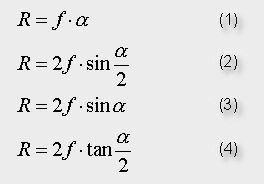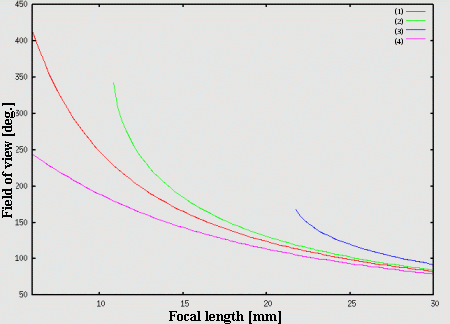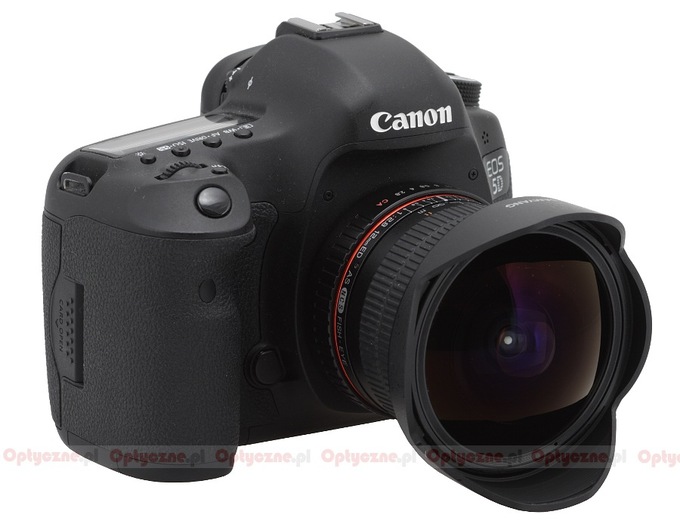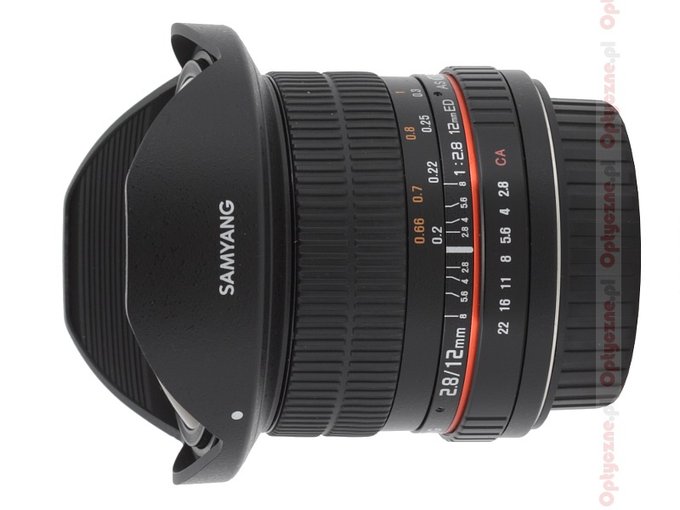Samyang 12 mm f/2.8 ED AS NCS Fish-eye
1. Introduction

where alfa is an angle at which incoming light beams fall into a lens; R is a distance between the image of an object point and the field centre and f means the focal length of a lens.
Please Support UsIf you enjoy our reviews and articles, and you want us to continue our work please, support our website by donating through PayPal. The funds are going to be used for paying our editorial team, renting servers, and equipping our testing studio; only that way we will be able to continue providing you interesting content for free. |
- - - - - - - - - - - - - - - - - - - - - - - - - - - - - - - - - - - - - - - - - - - - - - - -
The first formula presents a mapping which maintains angular distances (that’s why it is also called equidistant), the second one preserves surface relations, the third (the so-called orthographic projection) preserves planar illuminance and the fourth (a stereographic projection) maintains angles. Of course every one of these means the image will have large amounts of barrel distortion – abandoning rectilinear imagery is, after all, the basic property of lenses with angles of view of 180 degrees or more.
Now we can easily show the relation between the angle of view and the focal length of the lens using all mappings, described above. The result of such an operation is presented in the picture below (we assume that a 35 mm film or a 24×36 mm sensor is our given detector ).
 |
The Samyang 12 mm f/2.8 ED AS NCS Fish-eye, tested by us, is a diagonal fisheye lens with 12 mm focal length, designed for full frame detectors. One glance at the graph above and you know that an angle of view of 180 degrees at a focal length near 12 mm is achieved for the pink line, described by the formula number 4 so for the stereographic mapping. In photography it can provide visual effects perhaps the most pleasant to the eye because in the corners of the field of view the objects aren’t compressed that much, with the shapes preserved close to their original form; also the curvatures of straight lines are quite moderate for such a type of lens. Still the stereographic lenses are difficult to construct and, in consequence, quite expensive. That’s why the fact that Samyang decided to launch such a lens on the market should be doubly appreciated. Mind you it is not the only lens of this type – let’s remind here that Korean company have already launched the Samyang 8 mm f/3.5 Aspherical IF MC Fish-eye designed for reflex cameras with an APS-C/DX sensor so a stereographic fisheye device; in fact it was one of the first optical instruments of their production.
After that a bit theoretical introduction we have the pleasure to present our test – enjoy! We would like to thank the distributor of Samyang in Poland, Next77, for lending us one specimen of that lens for testing purposes.
You are also invited to get acquainted with our test procedure, described in the article "How do we test lenses?" If you feel it’s still not enough, please go to our FAQ section where you can find some further explanation.
 |







